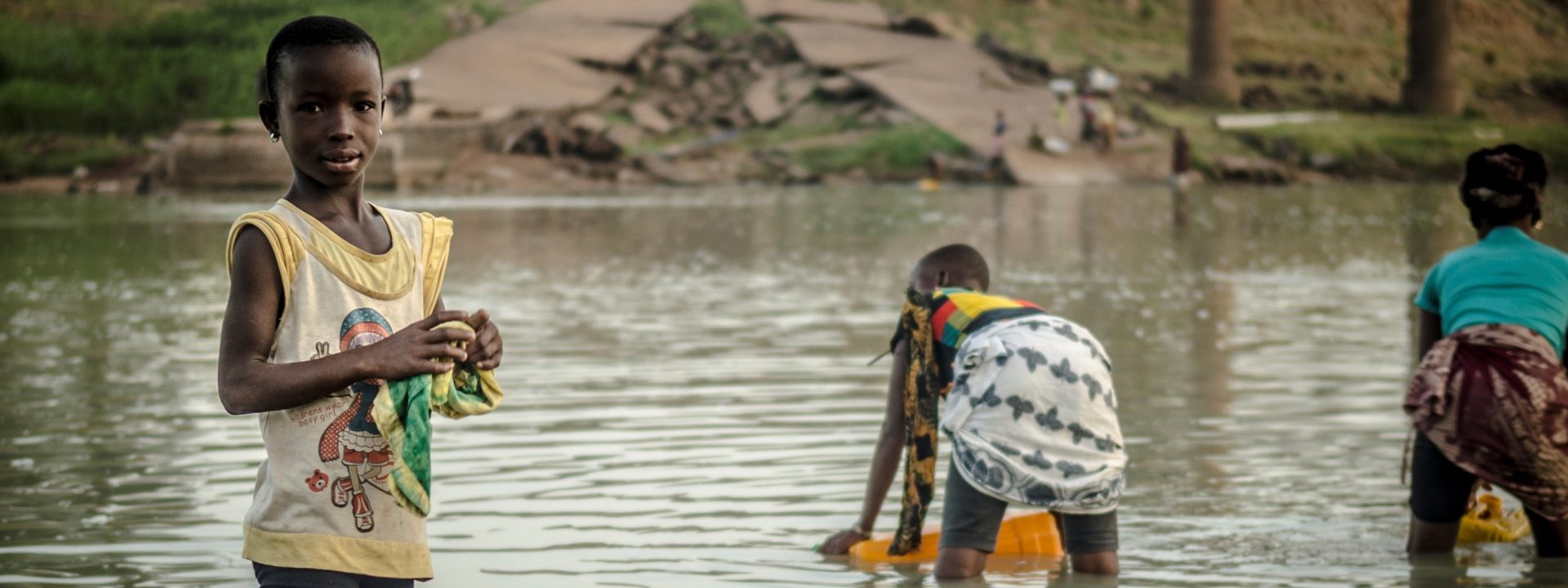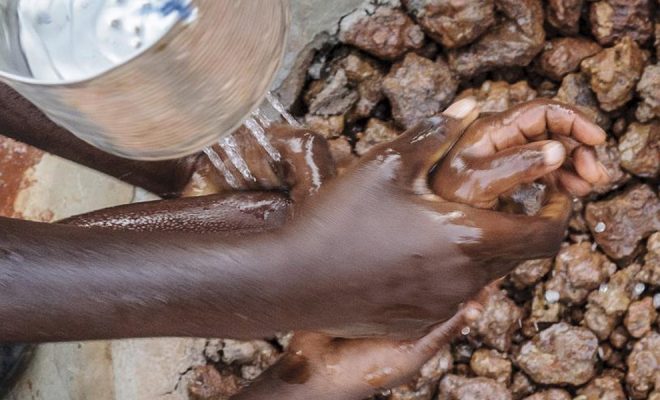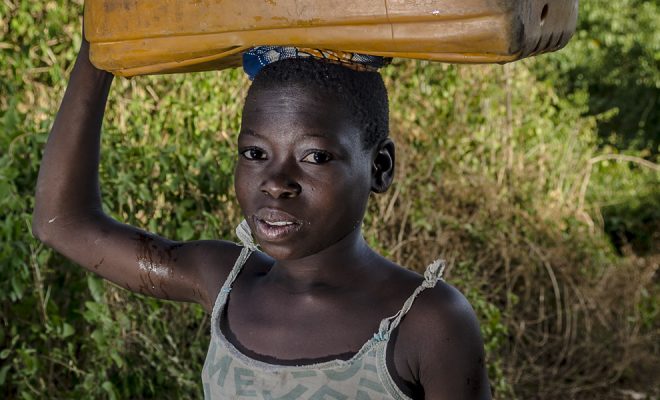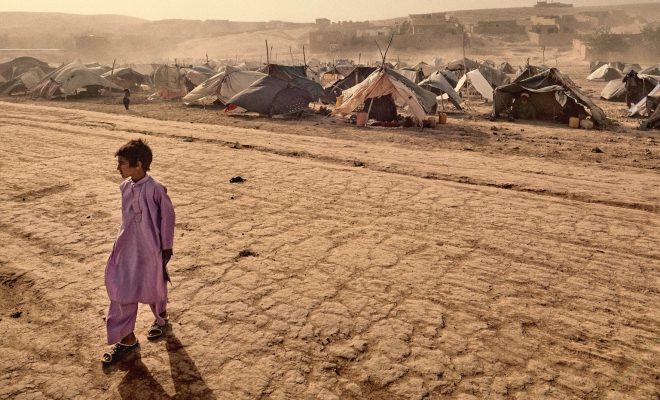Mali is an example. Covid-19 has erupted in the African country as it struggled with a fierce fight against malnutrition. Already a few months before the pandemic, the food situation of the population was critical; according to UNICEF estimates, 10% of Malians suffered acute malnutrition and 160,000 children were at risk of suffering it.
The NGO Acción contra el Hambre had achieved a major success: bringing treatment for this endemic disease to community health workers in the poorest areas of the country, which were plagued by droughts and the lack of safe access to water and sanitation. Until then, malnourished children were treated by Mali’s inefficient health system, which meant that their mothers had to travel to health centers wasting hours of work with unhealthy walks for affected children.
The success of the new method is based on the distribution of bags of Plumpy’Nut to the leaders of each community. This is a therapeutic food made of peanut paste mixed with vitamins and other micronutrients. Last year this food was included by the Government in their List of Essential Medicines.
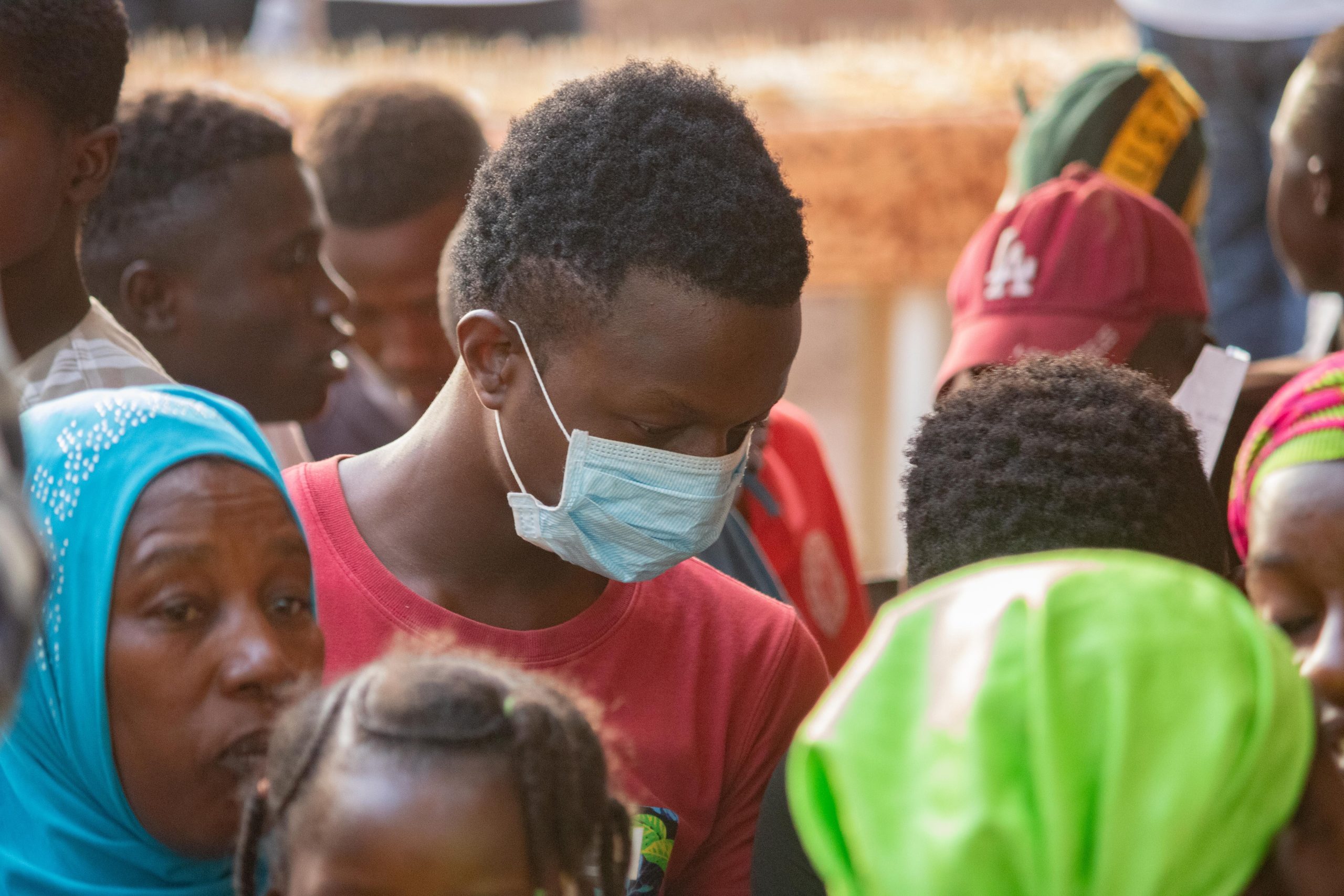
People take precautions in Mali against covid-19. © World Bank / Ousmane Traore
The cruel consequence of lockdown
The pandemic has made the work of these community health workers very difficult, as they depend on group training, home visits and personal interactions. Due to the lack of personal protection equipment and fear of contagion, the work of these mobile workers has been disrupted and the poorest families risk being left without Plumpy’Nut and without the essential education in healthy behavior to prevent endemic diseases, now also including Covid-19.
Mali has 15.83 million inhabitants, more than half of whom live below the poverty line, according to data of the United Nations Development Programme (UNDP). In response to the health emergency, the We Are Water Foundation is going to collaborate with Acción contra el Hambre in an aid project in the region of Kayes, a geographical enclave that is one of Mali’s most important migratory hotspots, paradoxically despite its major gold mines. On the southern edge of the Sahel, Kayes sums up the problems faced by Mali and most of the countries in the African “hunger belt”: high rates of violence, droughts and very limited health resources.
The blockage of aid and the neglect due to the lockdown worsen the precarious situation of health facilities to cope with the pandemic. Most households have no water supply or soap and they lack hygiene education to fight contagion. The project focuses on facilitating the access to handwashing and helping to coordinate the government action plans and other humanitarian interventions that have been overwhelmed. This is a situation most of the poorest countries are in, and one that may trigger a humanitarian catastrophe greater than the direct effects of the pandemic.
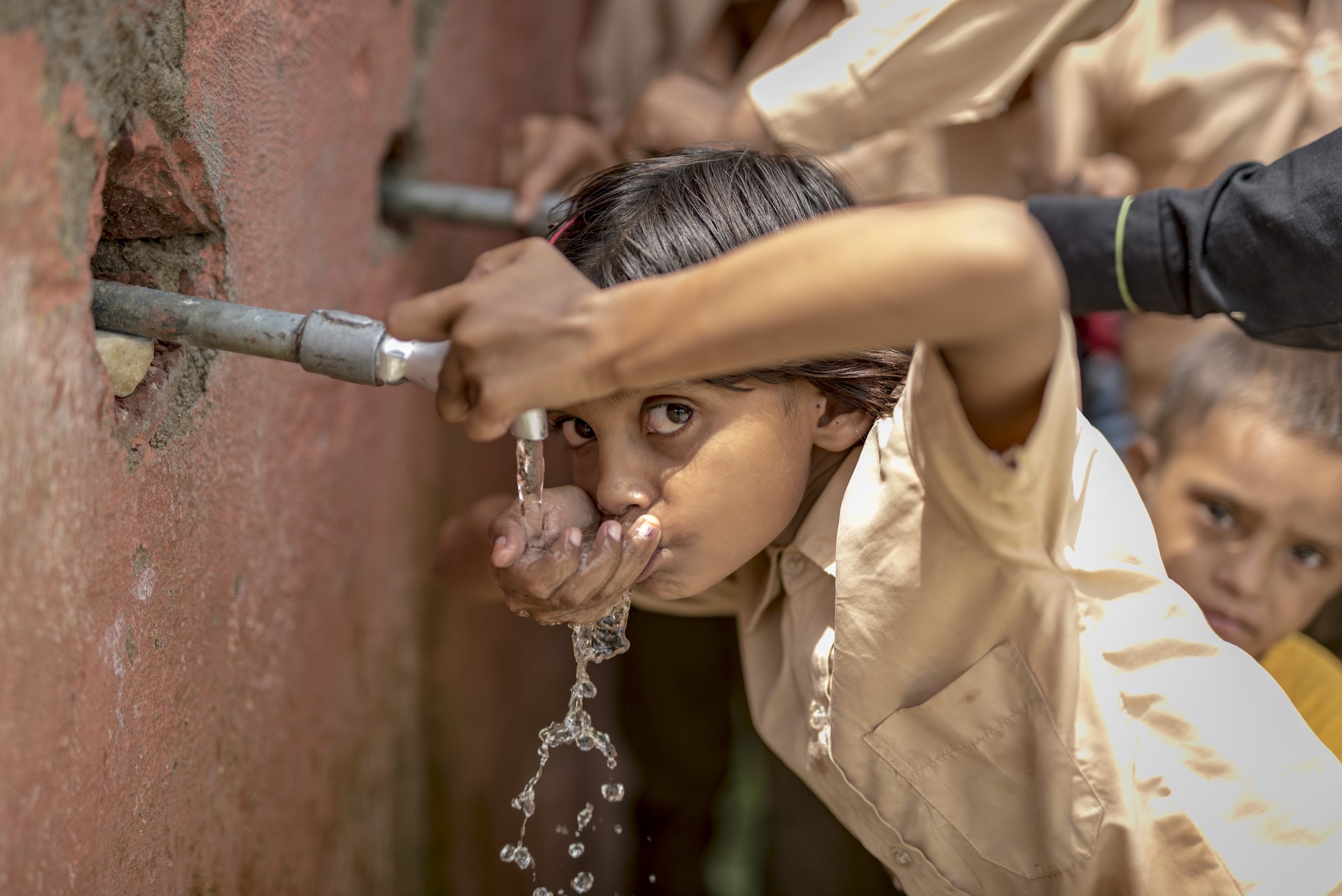
370 million children are at risk of malnutrition due to the closure of schools because of the pandemic. © Carlos Garriga / We Are Water Foundation
The unbearable childhood malnutrition
According to UNICEF, malnutrition is the cause of half of all deaths among children under the age of five. Before the pandemic, 8,000 children died every day in the world from this cause, understood as a combination of the lack of food and infectious diseases. In the face of any diseases, a child with acute malnutrition increases nine times the probability of dying over that of a well-nourished child. And there is no lack of diseases in regions with a malnourished population. The lack of access to drinking water and sanitation is almost always accompanied by food insecurity and causes diarrhea, cholera, typhoid fever, polio, meningitis, hepatitis and schistosomiasis, to name the most well-known diseases.
Considerable progress has been made in the fight against child mortality over the past decade; however, acute malnutrition continues to threaten the lives of 17 million children worldwide. In 2019, before the current pandemic broke out, the World Food Programme had already predicted that 2020 would be a year of severe food crises in many parts of the world. Now, with coronavirus, the risk has increased and is taking on dramatic proportions.
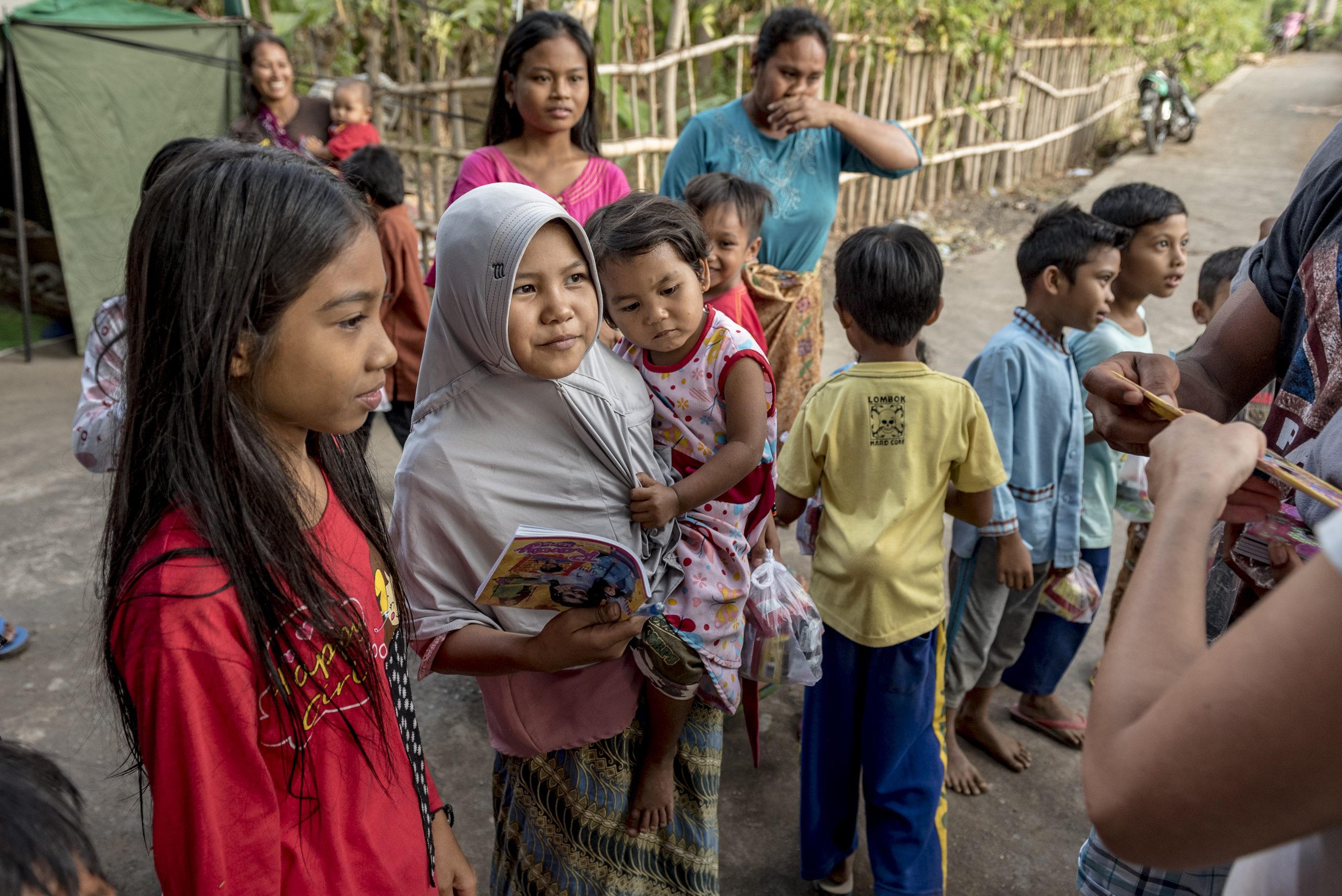
News of the children’s distress in poor countries has made the headlines in international media, albeit not with the required visibility. © Carlos Garriga / We Aare Water Foundation
There is no food without school
The closure of schools due to lockdown is one of the triggering factors of child famine. For many children, school is much more than a place to learn; it is the way to be physically safe, to benefit from health services, to practice hygiene and use sanitation facilities that are not available at home. But for many, school is above all, nutrition: many children eat their only daily meal there.
UNICEF estimates that 370 million children are at risk of malnutrition due to the closure of schools because of the pandemic. These meals are especially important for girls as this is, in many cases, an incentive for their parents, who cannot feed them, to send them to school, freeing them from domestic burdens and early marriage.
Street children without support
UNICEF and the NGOs working with children also warn that the pandemic threatens to cause an unprecedented humanitarian crisis for children engaged in begging and garbage collection. With lockdowns in cities, there are no handouts or street vending and many have lost the precarious governmental or non-governmental aid they received because they are not registered, and not even their families, who have sent them to beg, know their whereabouts. It is estimated that more than 150 million children worldwide are homeless and live in the markets where they trade, or in makeshift slums. Their exposure and vulnerability to malnutrition has greatly increased and they live in totally unsanitary conditions, suffering from scabies and other diseases and without access to safe water and sanitation.
News of this dramatic situation for children has multiplied with the pandemic. In Senegal, 50,000 child beggars from Koranic schools have been left on the streets. In Ghana there are fears about the fate of some 100,000 homeless children. In Nigeria, where some 10.5 million children were out of school last year and more than 360,000 children were at risk of suffering acute malnutrition, there are serious concerns about the fate of the street vendors of water, fruit, sweets and trinkets who proliferate in the country’s cities and who have been left without a livelihood for themselves and their families. The African Union describes this as the “informal sector”, which is also widespread in countries like South Africa, Rwanda or Zimbabwe.
The WHO and the World Food Programme warn that last June malnutrition had notably increased in Yemen, the Democratic Republic of Congo and Afghanistan, countries that account for one third of the total number of people suffering from extreme hunger, with Venezuela being the fourth country in the world most affected by the food crisis.
In India, the neglect in which some communities live has worsened with the pandemic. An example is the situation of primitive tribal groups, such as the Chenchus of the Dornala area in Andhra Pradesh, who have been living for decades with a high risk of malnutrition, lack of access to water and poor sanitary conditions, and who motivated one of the aid projects of the Foundation, in collaboration with the Vicente Ferrer Foundation. There, the lack of information on the pandemic is mainly affecting women who need to fetch water and who have been rejected for fear of contagion.
News of the children’s distress in poor countries has made the headlines in international media, albeit not with the required visibility. The world is facing a humanitarian disaster that requires awareness and immediate pressure on politicians and business owners for immediate action. This reaction has already started and is urgently developing. Collaborative projects such as those planned by the We Are Water Foundation open a door to hope that we must all enlarge.
You can help here


